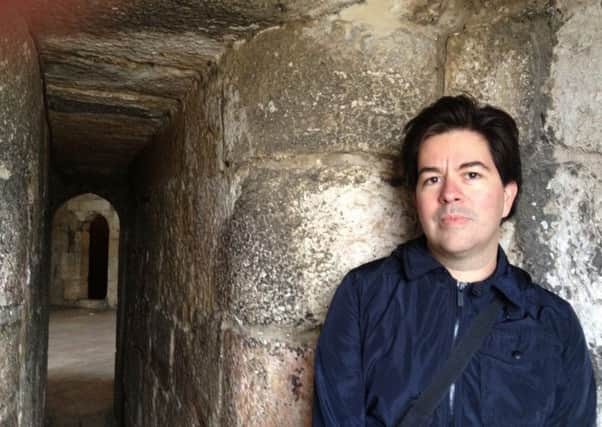Book review: Marvellous Thieves, by Paulo Lemos Horta


This vivid, intellectually lively and revelatory book gives complex answers – and brilliant stories of literary sleuthing – to a couple of seemingly simple questions: who wrote Arabian Nights? And is it called that or Tales From (or Of?) The One Thousand And One Nights? It’s one of those books that has seeped into the collective consciousness. We all know Aladdin, or Ali Baba And The Forty Thieves, or Sinbad, and some of us will know about Scheherazade or Caliph Harun al-Rashid and his trickster sidekick Abu Nawas, or Prince Ahmad and the Fairy Princess Peri-Banu.
So the opening twist is one I already knew. For half of those stories, Aladdin, Ali Baba and Peri-Banu, there are no Arabic texts that pre-date the “translation” by Antoine Galland in the first decades of the 18th century. The suspicion was that, despite Galland claiming he received these “orphan stories” from a Syrian traveller called Hanna Diyab, that they had more in common with the fairy stories of Charles Perrault or Marie-Catherine d’Aulnoy. They were certainly different – in imagery, in opulence, in rags-to-riches transformation. If they were popular, who cared about the provenance?
Advertisement
Hide AdSo, twist two: Diyab’s memoirs, in partial form, turn up in the Vatican Library. There is a striking resemblance in his writing style, describing his travels with the French Orientalist adventurer Paul Lucas (and in Lucas’s own three memoirs) to the “orphan stories”. Maybe Galland, a man more inclined to Greece than Baghdad, underplayed the sophistication of Diyab’s recounted yarns. So, twist three, and purl one: when Diyab is writing about French princesses and Corpus Christi processions, his language is so similar to the stories eventually moralised and sentimentalised by Galland, it’s astonishing. “Aladdin” is not a Syrian writing about a fictitious China, but a Syrian traveller to Europe filtering his visions of Europe through traditional Arabic storytelling. He was a boy made good, after all. He had even witnessed Lucas send a servant into a crypt and come out with a lantern and a ring, and seen a palace disappear and reappear at the Opera in Paris.
But then twists too many to enumerate appear. Les milles et une nuits was translated from French to English, and was a remarkable success. So much so that it was thought that translating from Arabic to English would be a good idea. Horta, in this delightfully askance book, looks at four of these translators: a liberal genius working for the British in India; a former engraver turned iconic travel writer; a lawyer who wanted to be a Pre-Raphaelite poet; and a man who could have given Flashman a thrashing but thought he was the ideal of cosmopolitanism.
The first, Henry Torrens, attempted a fluent translation from a newly acquired manuscript while working in colonial India and trying to promote a free press and British understanding of indigenous languages and cultures. This was the period when Macaulay notoriously said “a single shelf of a good European library was worth the whole native literature of India and Arabia”. Edward Lane, who made his name as a traveller in Egypt, used a different manuscript and bolstered his book with observations on life in Cairo, thinking it the “soul” of the Arabian Nights. Perhaps the best parts of the book concern a brilliantly complex figure, Osman Effendi, who effected many of Lane’s introductions, found him lodgings, initiated him into Cairean life and who was actually a Scotsman called William Thomson, who had been captured during the Anglo-Turkish War, had converted, fought against the Wahhabis, and whose observations bolstered Lane’s commentary, especially about the supernatural still existing in North Africa.
Next along is an aspirant poet who knows little Arabic: John Payne turned the stories into a silky, languid, over-spiced dream. But he had used Torrans and Lane, and was in turn plagiarised by Burton, one of the most famous explorers and braggarts of the day, who did his own by rewriting and added in the bits about sex. His “Terminal Essay” is a masterpiece in pretending to be expert and academic yet circumventing Victorian pursed-lips by basically writing about homosexual tolerance, and any other supposed deviance he could work into the text. As was once said in the Victorian Edinburgh Review “Galland for the nursery, Lane for the study, Burton for the sewers”.
The real point about this clever book is that many of the things we think about modernity – let alone postmodernity – have already happened. Postmodernism says that the book is always fluid; no text shows this as clearly as Arabian Nights. There can be no perfect version. It shows that authors are also collaborators, translators, plagiarists, elusive. It deals with whether poetry can be translated or not. It deals with whether the “other” – Arabia, India, Egypt, London cliques – is ever comprehensible.
Most of all, it tells the story of Diyab, a Maronite Christian who went into business, travelled to the court of the “Sultan of France” with hopes of being his Arabic librarian, told stories, was impressed and impressive and was shunned, and created the tale countless Scottish families watch as pantomime. He came from and returned to Aleppo. Remember that.
*Marvellous Thieves, by Paulo Lemos Horta, Harvard University Press, £22.95